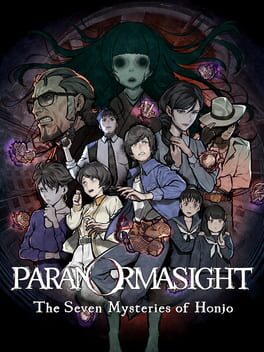Misery-inducing. Too much of the game is people just standing around talking or sitting around talking, and not even in a comfy visual novel way. Every 10 seconds they'll stop talking until you make a few selections to prompt them or someone else to continue, making "conversations" feel disjointed and padded out.
These conversations tend to happen in wide open 3D spaces, too, and the spacious environments make it even more awkward that the characters rarely ever make use of them outside of the prologue. They just. Stand around. In big parks and on big bridges. This is another way the game would benefit from actually being a visual novel: a static 2D background would make it less obvious that they're wasting so much stage space.
Moving along in the main story is constantly hampered by a need to hit a specific trigger in another route. It's not just one or two big locks preventing your progress, like in a reasonable game – you hit a wall in nearly every scene if you’re unlucky and have to hop back and forth until you find who unlocks what.
These technical annoyances exist to allow cool meta twists and puzzles to happen once in a while, which cannot excuse how tedious it is the rest of the time.
The pacing is wild. The prologue is blisteringly fast, and the rest is agonizingly slow. And the most villainous forces in the game die off-screen, never show up in person at all, or never personally reveal their motivations. They’re all unsatisfying.
What I can admire in this game is the art style and that it gives you everything you need to solve the mysteries and guess the plot twists ahead of time. Unfortunately, figuring it all out miles ahead of the characters made it even worse to watch them just stand around talking 10 seconds apiece. But for someone who doesn't guess it all (and did enjoy the game), the amount of foreshadowing would probably make a second playthrough pretty neat.
These conversations tend to happen in wide open 3D spaces, too, and the spacious environments make it even more awkward that the characters rarely ever make use of them outside of the prologue. They just. Stand around. In big parks and on big bridges. This is another way the game would benefit from actually being a visual novel: a static 2D background would make it less obvious that they're wasting so much stage space.
Moving along in the main story is constantly hampered by a need to hit a specific trigger in another route. It's not just one or two big locks preventing your progress, like in a reasonable game – you hit a wall in nearly every scene if you’re unlucky and have to hop back and forth until you find who unlocks what.
These technical annoyances exist to allow cool meta twists and puzzles to happen once in a while, which cannot excuse how tedious it is the rest of the time.
The pacing is wild. The prologue is blisteringly fast, and the rest is agonizingly slow. And the most villainous forces in the game die off-screen, never show up in person at all, or never personally reveal their motivations. They’re all unsatisfying.
What I can admire in this game is the art style and that it gives you everything you need to solve the mysteries and guess the plot twists ahead of time. Unfortunately, figuring it all out miles ahead of the characters made it even worse to watch them just stand around talking 10 seconds apiece. But for someone who doesn't guess it all (and did enjoy the game), the amount of foreshadowing would probably make a second playthrough pretty neat.
